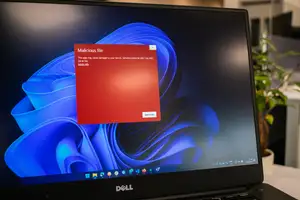
10 Tech Trends Defining Small Businesses in 2023
One of the most important things for small businesses (SMBs) today is the utilization of technology, which is an ever-changing landscape. Here are ten vital tech trends for small businesses that are currently setting the standard in 2023, along with their benefits and how you can get ready to use them in your business.
Technology is a major tool that emerging companies can use to give them a better chance of competing with the bigger companies. Thanks to several recent technological breakthroughs, exciting new levels of automation have evolved, enabling owners to save time and effort in certain areas and focus more on scaling their business like never before.
Most of these advances in technology can easily be integrated to make the day-to-day running of businesses more productive, efficient, and streamlined. Real-time data can now easily be analyzed, leading to more informed decisions being made by business owners, thanks to innovative new digital technologies like CRM (customer relationship management) software.
New and improved customer support chatbots have also enhanced customer service and satisfaction levels, enabling business owners to be there for their customers every second of the day. Additionally, managing finances more accurately is now possible thanks to innovative new accounting software, meaning you never have to miss important payments ever again.
10 Small Businesses Tech Trends for 2023
- Sustainable Technology and Clean Energy
- Applied Artificial Intelligence (AI) and Machine Learning
- Super Apps and Hyperautomation
- Blockchain and Embedded Finance
- Zero-Trust Cybersecurity and Architecture
- Hybrid work Engagement and Retention
- Metaverse
- Distributed Infrastructure and Edge Computing
- Responsible Datafication
- Software 2.0: Low-code Programming
To compete with leading brands, using the latest technological trends for your small business to grow in as little time as possible is of the utmost importance.
Here is a closer look at the ten most significant tech trends that can help grow your business, how you can implement them, their potential benefits, and how some of these trends are more likely to impact your business.
SMB Tech Trends Defining 2023
2023 has already witnessed the extraordinary evolution in lightning-fast time in many ground-breaking new digital technologies. Let’s dive straight in to discover more about the top ten tech that can help small businesses stay one step ahead of their rivals and compete with bigger businesses.
Sustainable Technology and Clean Energy
As more people than ever become conscious about the environment and their carbon footprint, there has been a huge shift towards sustainable tech and clean energy, such as CCO (carbon capture and storage), insulation and heating, electric vehicles, and renewable energy generation.

Clean energy and sustainable tech also support various other technologies and HPC (high-performance computing) that can reduce time-to-market and enhance productivity.
Applied Artificial Intelligence (AI) and machine learning
SMBs looking to become more efficient and increase productivity will also be left behind if they don’t use AI (Artificial Intelligence) and machine learning. These vitally important tools can gather data and identify patterns using real-world data like never before.

Small business owners can also use Artificial Intelligence and machine learning to guarantee their stock levels are always at optimum levels by predicting customer demand. Based on previous behavior and dealings, AI and ML systems can also offer more tailored experiences for each customer.
The best way to make the most of this tech trend is to find out which of your processes AI could best automate. Also, don’t forget to relay to your staff that AI will only augment the work, not fully replace them and leave them unemployed.
Super Apps and Hyperautomation
Super apps are innovative platforms that can streamline processes by combining a variety of apps into a single interface, thus boosting productivity and efficiency. One such example is Initial Public Offering (IPO) software used in accounting.
It’s a fantastic tool and one of the most effective ways for small business operators to generate additional funds. However, it adds a more significant workload for your finance team (and yourself) to deal with. Initial Public Offering accounting solutions are designed to integrate your financial activities automatically.

Automation continues to evolve at an incredible pace thanks to software and robots becoming more intelligent, which eliminates the need for employees to carry out manual repetitive tasks, reducing time-to-market.
Dedicating finances to automatic processes is crucial for SMBs, so think carefully about adding these innovative tools to your current business model and existing apps.
Blockchain and embedded finance
The future of the fintech industry may lie heavily in what is referred to as embedded finance. For example, online retailer Amazon now gives sellers various lending possibilities and a buy now, pay later function was recently added to the iPhone by Apple.

Additionally, blockchain technology is more transparent and increases business security. Automation in this way eliminates the need for third-party verification and increases efficiency.
It would be best if you explored the avenues of your business offering embedded financial services, such as banking or payments, or at least assess any rewards you would likely benefit from by managing your finances with blockchain technology.
Zero-Trust Cybersecurity and Architecture
A growing number of businesses are incorporating zero-trust cybersecurity architecture that streamlines access control and verification to combat the threat of cyberattacks.

Not only can it boost the confidence levels consumers have in your business, but it can also lower compliance and security costs. You may want to look at the benefits of zero-trust architecture and try to devise a strategic way to implement it. You will also need to think about how the results can be tracked and monitored.
Hybrid Work Engagement and Retention
There has been a noticeable move toward hybrid working practices in recent years. This has also led to a parallel increase in the technology that aligns with this new way of working. Some of the most notable collaborative working platforms that have been specifically designed to help in this way are HR systems, Skype, Slack, and Microsoft Teams, to name a few.

Find out which productivity and collaboration software would best benefit your team before investing in this tool and find out from your workers which systems and equipment would benefit them the most.
Metaverse
Although the Metaverse is still a relatively new concept, the technology, along with the VR (Virtual Reality) and AR (Augmented Reality) wearable devices used to experience these digital worlds are more popular than ever. Experts believe this technology is likely to revolutionize how businesses sell goods and services to their customers and interact with them.

The technology is also likely to lead colleagues and employees to interact with each other in these digitally generated environments. It can be used by SMBs as a way of training staff. Digital twins (virtual models of real-world objects) can also assist with process and spatial planning.
To begin with, pay more attention to how you can design and maintain a digital twin of your business. Also, to support hybrid working, you may want to consider ways of improving your meeting and interview facilities.
Distributed Infrastructure and Edge Computing
Distributed cloud infrastructure and edge computing often go hand-in-hand with each other. They enable SMBs the power to ensure more consistency by managing edge devices from just one control panel. This leads to enhanced data privacy and increased security for your small business. It improves your cybersecurity and ensures your compliance with the relevant privacy regulations.

To use this tech trend, you should start by looking at how your current IT infrastructure can be modernized and standardized, especially if you plan on making it compatible with cloud and edge computing.
Remember to stay in line with relevant legislation by having the necessary redundancies in place in case you ever suffer from outages.
Responsible Datafication
Responsible datafication is a term coined for how businesses are legally permitted to use available data to improve their products and services for their customers. The process of using personal customer data must be handled in a responsible manner because you would not want to end up breaking data protection regulations set out by things like GDPR or CCPA.

To benefit the most from this tech trend, always take the time to understand how customer data can legally be gathered, stored, and used. Investing in data analytics software can be a great help, especially things like ERP (enterprise resource planning) software, which enables the owners of SMBs to manage almost every aspect from one secure database.
ERP software enables business owners to:
- Lower costs
- Future-proof SMBs
- Increase productivity
- Streamline and integrate essential processes
These innovative tech tools are entirely cloud-based, which your entire team can work from using identical data to minimize human error. You can also benefit from real-time insights into the key areas of your business, enabling you to scale effectively and be more effective in your decision-making.
Software 2.0: Low-code Programming
This emerging tech trend involves utilizing ML (machine learning) tools to automate manual tasks better and customize your existing code. In short, it can boost efficiency and save plenty of time that can be spent on other, more important, areas of your business. Software 2.0 also enables AI-driven applications to be scaled more rapidly.

To make the most of software 2.0, evaluate your tech stack to ensure it’s compatible with Software 2:0. To bring more value to your customer base, you can also invest in your IT talent and find ways to leverage low-code programming.









